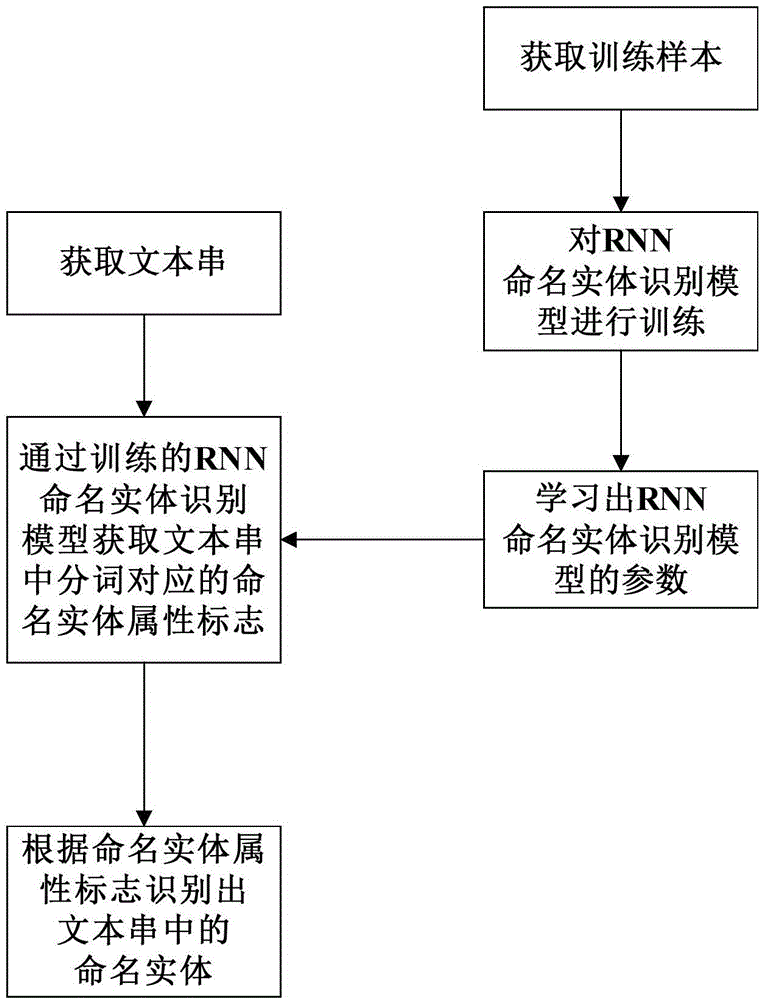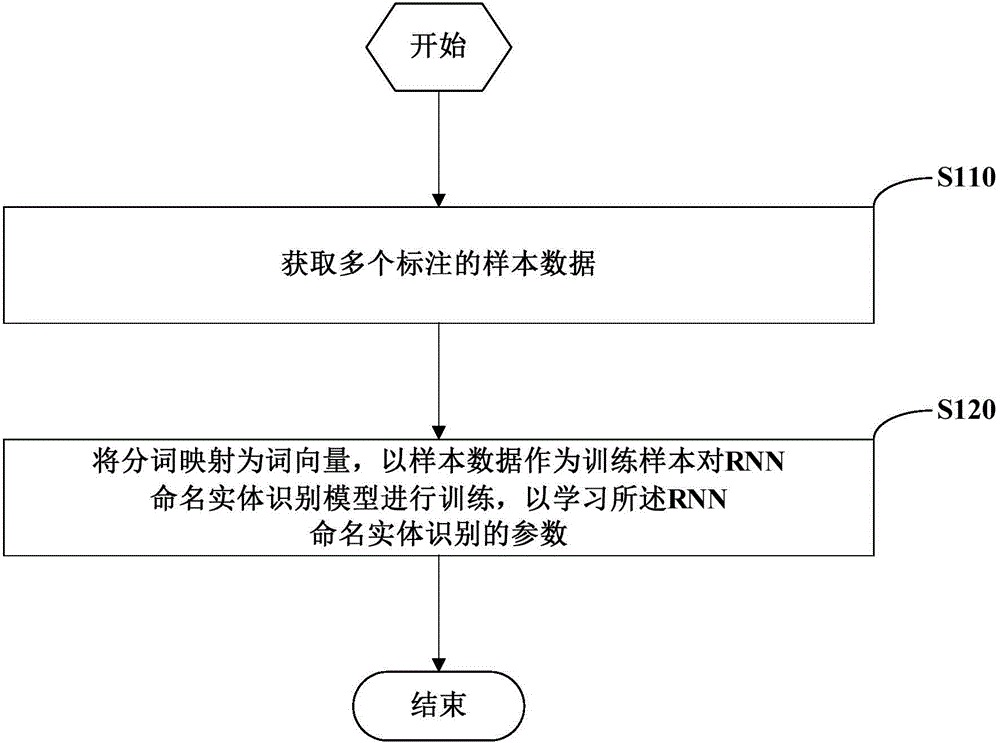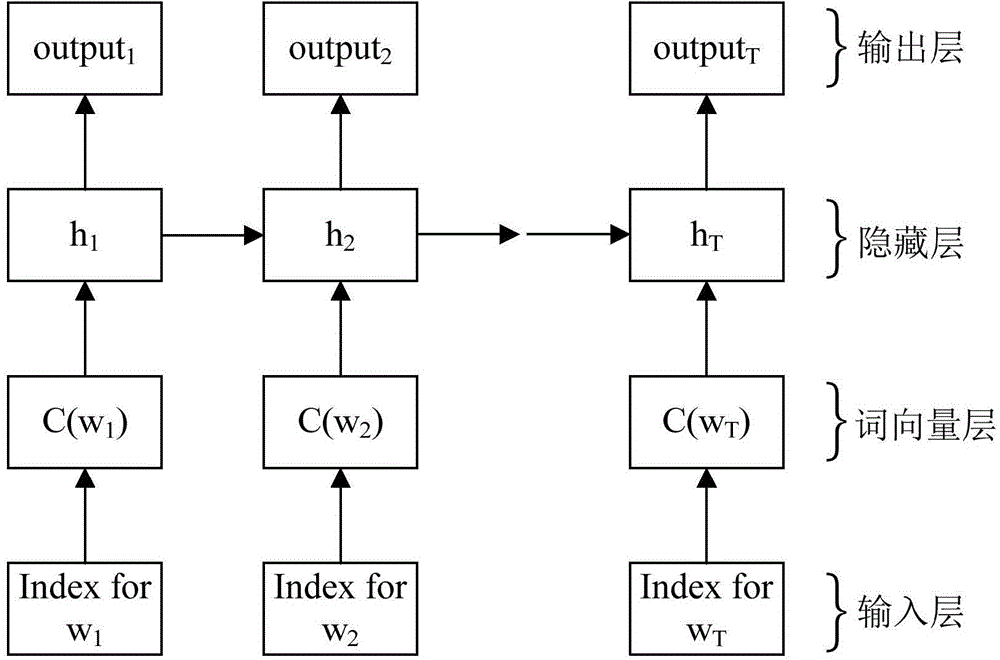Named-entity recognition model training method and named-entity recognition method and device
A named entity recognition and named entity technology, applied in the field of training named entity recognition models, can solve the problems of low recognition accuracy and lack of generalization ability of the model, and achieve the effect of improving recognition accuracy and good generalization ability
- Summary
- Abstract
- Description
- Claims
- Application Information
AI Technical Summary
Problems solved by technology
Method used
Image
Examples
Embodiment 1
[0022] figure 2 It is a flow chart showing the method for training the RNN named entity recognition model according to Embodiment 1 of the present invention. The RNN named entity recognition model is used to recognize named entities in text.
[0023] refer to figure 2 , in step S110, obtain a plurality of labeled sample data, each of which includes a text string and a plurality of word segmentation annotation data thereof, and the word segmentation annotation data includes the word segmentation and its presence in the text string Named entity attribute flags in the described text string.
[0024] Specifically, according to the concept of the present invention, the named entity attribute flag of the word segmentation in the text string includes information about whether the word segmentation belongs to a named entity.
[0025] In addition, the named entity attribute flag of the word segmentation in the text string may further include a position label of the word segmentati...
Embodiment 2
[0050] Figure 4 It is a flow chart showing the method for identifying named entities in Embodiment 2 of the present invention. The method may be performed, for example, on a search engine server.
[0051] refer to Figure 4 , in step S210, a text string is acquired.
[0052] The text string may be a search term sent from the client. For example, the user inputs "I never thought why it was so hot?" on the browser search engine interface to search, and the browser application sends the search term to the search engine server.
[0053] In step S220, word segmentation is performed on the text string to obtain a plurality of word segmentations.
[0054] For example, the search engine server may use the existing word segmentation technology to perform word segmentation processing on the acquired text string to obtain multiple word segments.
[0055] In step S230, the RNN named entity recognition model trained according to the method described in the first embodim...
Embodiment 3
[0061] Figure 5 It is a logical block diagram showing the device for training the RNN named entity recognition model according to Embodiment 3 of the present invention.
[0062] refer to Figure 5 , the RNN named entity recognition model is used to recognize named entities in text, and the device for training the RNN named entity recognition model includes a sample data acquisition module 310 and a parameter learning module 320 .
[0063] The sample data acquisition module 310 is used to acquire a plurality of labeled sample data, each of which includes a text string and a plurality of word segmentation tagging data thereof, and the word segmentation tagging data includes a word segment and its tagging data separated from the text string Named entity attribute flags in the text string.
[0064] Optionally, the named entity attribute flag of the word segmentation in the text string includes information about whether the word segmentation belongs to a named entity. ...
PUM
 Login to View More
Login to View More Abstract
Description
Claims
Application Information
 Login to View More
Login to View More - R&D
- Intellectual Property
- Life Sciences
- Materials
- Tech Scout
- Unparalleled Data Quality
- Higher Quality Content
- 60% Fewer Hallucinations
Browse by: Latest US Patents, China's latest patents, Technical Efficacy Thesaurus, Application Domain, Technology Topic, Popular Technical Reports.
© 2025 PatSnap. All rights reserved.Legal|Privacy policy|Modern Slavery Act Transparency Statement|Sitemap|About US| Contact US: help@patsnap.com



